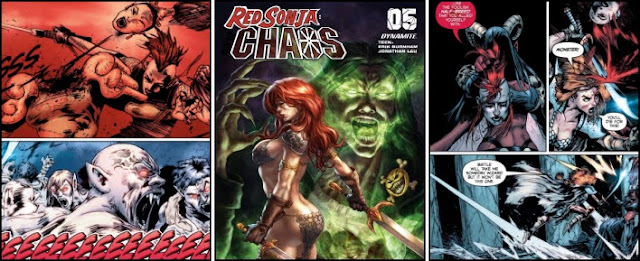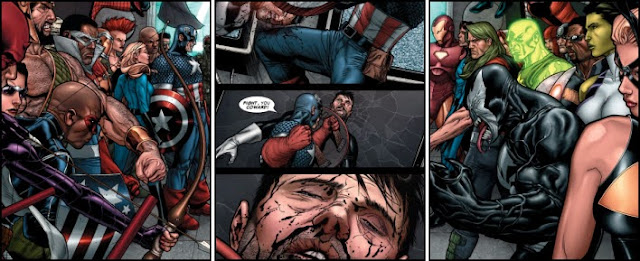 |
| BATMAN: THE ADVENTURES CONTINUE No. 3, May 2020 |
Indeed, having vanquished the mud-like former-movie star, courtesy of a “fast-acting sedative” which’ll keep the super-villain asleep for six hours, Slade Wilson’s colourfully costumed presence is felt in every subsequent scene, including a delightfully humorous breakfast set in Wayne Manor’s kitchen, where the billionaire inadvertently brings his two excited partners-in-training down to earth with a verbal bump following the praise Deathstroke has previously heaped upon them; “Don’t put too much stock in his compliments… Men of Wilson’s ilk are visible only when they need to be.”
Equally as enthralling, alongside an all-too brief aerial battle high over Midtown between Batgirl and “the rogue daredevil Roxy Rocket”, is this comic’s ongoing theme of the Caped Crusader being spied upon by a mysterious man with a white streak running through his dark hair. Spotted by Slade, when the nefarious mercenary is busy trying to smooth-talk Batgirl into joining him in a “bigger theatre for a woman with your talents”, it enticingly seems clear that the binocular-carrying rogue is playing some patiently long game with the Dark Knight and his adolescent entourage.
Very much adding to this fine blend of nostalgic Nineties story-telling with a much larger “DC Comics” cast, are Ty Templeton’s layouts, which really manage to capture the “film noir aesthetics” allure of the broadcast show’s outsourced cartoon studios. Wilson’s look and dynamic posturing, particularly at the end of this book when he’s practising against a plethora of target dummies, genuinely looks as if he’s been taken straight off a South Korean film reel produced by “Dong Yang Animation”, and arguably fits in seamlessly with the much more well-established drawings of Bruce Wayne’s inner circle.
 |
| Writers: Alan Burnett & Paul Dini, Artist: Ty Templeton, and Colorist: Monica Kubina |


































